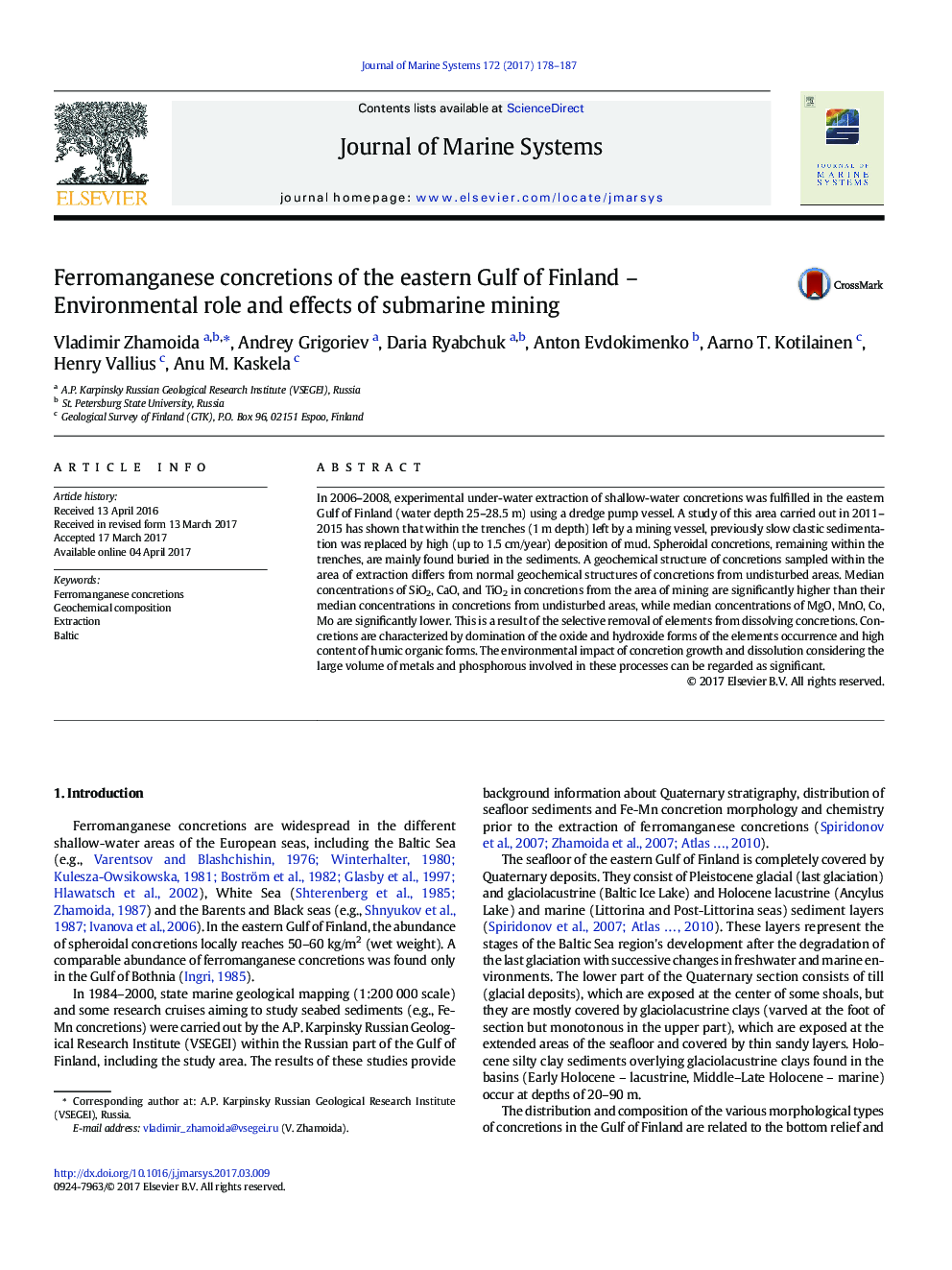| Article ID | Journal | Published Year | Pages | File Type |
|---|---|---|---|---|
| 5765999 | Journal of Marine Systems | 2017 | 10 Pages |
Abstract
In 2006-2008, experimental under-water extraction of shallow-water concretions was fulfilled in the eastern Gulf of Finland (water depth 25-28.5Â m) using a dredge pump vessel. A study of this area carried out in 2011-2015 has shown that within the trenches (1Â m depth) left by a mining vessel, previously slow clastic sedimentation was replaced by high (up to 1.5Â cm/year) deposition of mud. Spheroidal concretions, remaining within the trenches, are mainly found buried in the sediments. A geochemical structure of concretions sampled within the area of extraction differs from normal geochemical structures of concretions from undisturbed areas. Median concentrations of SiO2, CaO, and TiO2 in concretions from the area of mining are significantly higher than their median concentrations in concretions from undisturbed areas, while median concentrations of MgO, MnO, Co, Mo are significantly lower. This is a result of the selective removal of elements from dissolving concretions. Concretions are characterized by domination of the oxide and hydroxide forms of the elements occurrence and high content of humic organic forms. The environmental impact of concretion growth and dissolution considering the large volume of metals and phosphorous involved in these processes can be regarded as significant.
Related Topics
Physical Sciences and Engineering
Earth and Planetary Sciences
Oceanography
Authors
Vladimir Zhamoida, Andrey Grigoriev, Daria Ryabchuk, Anton Evdokimenko, Aarno T. Kotilainen, Henry Vallius, Anu M. Kaskela,
